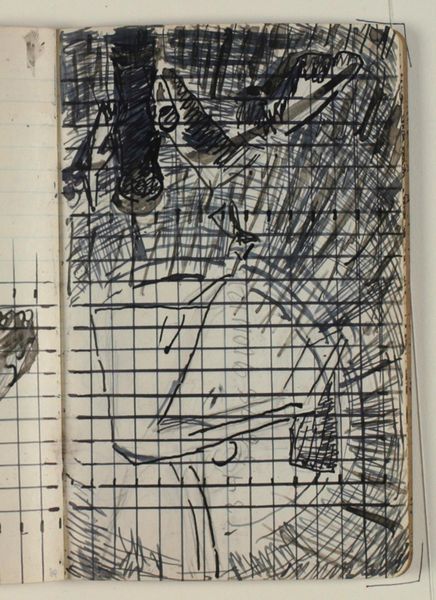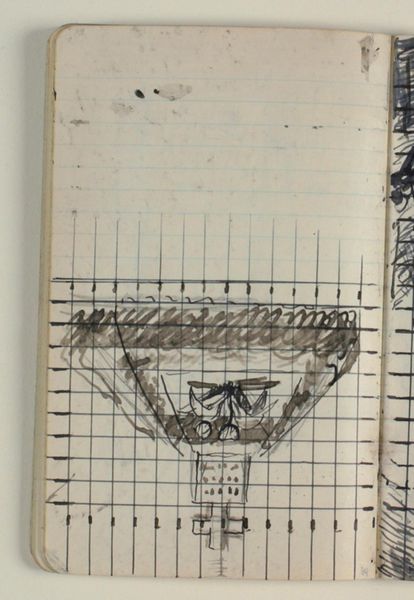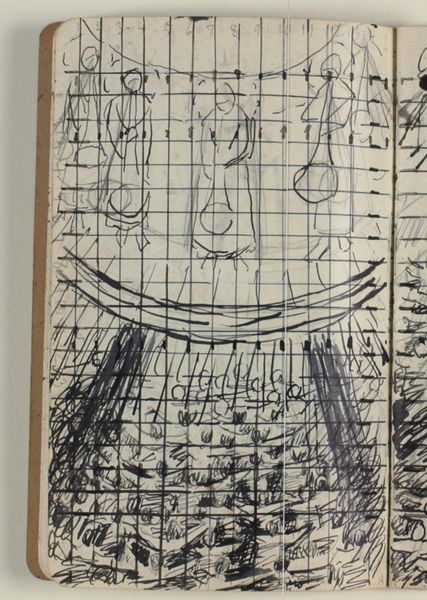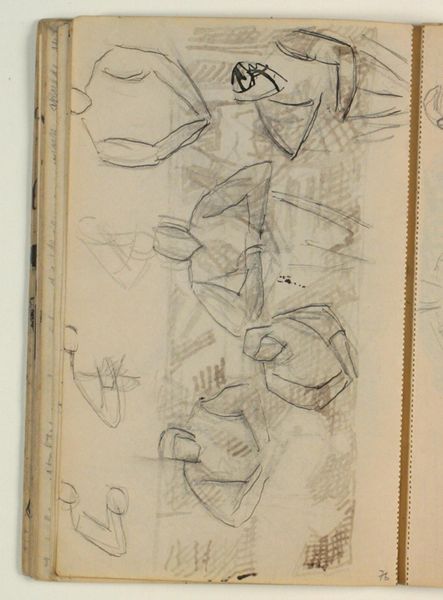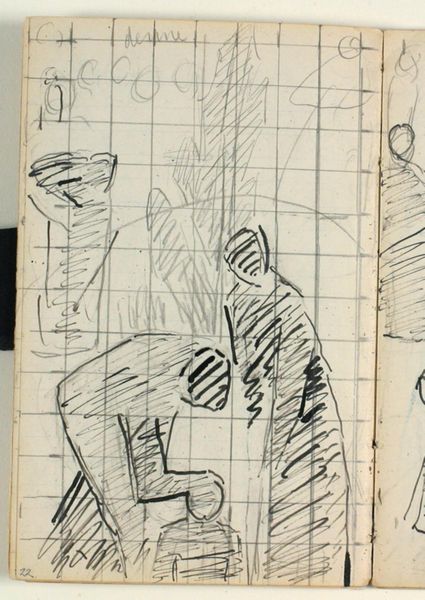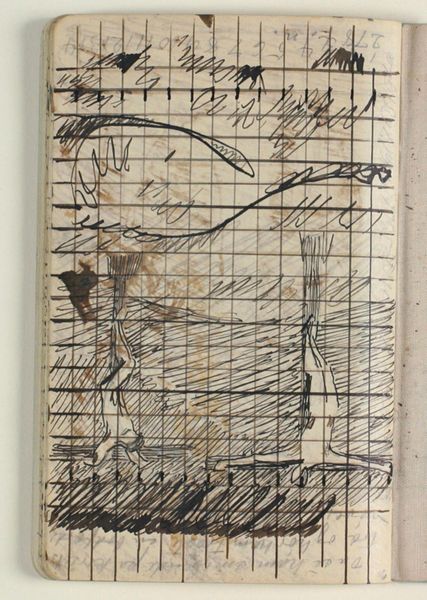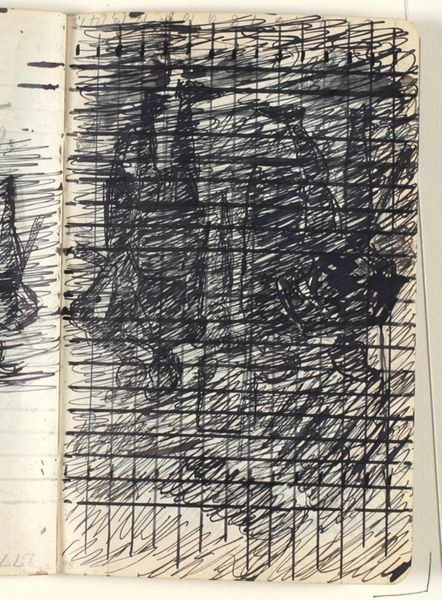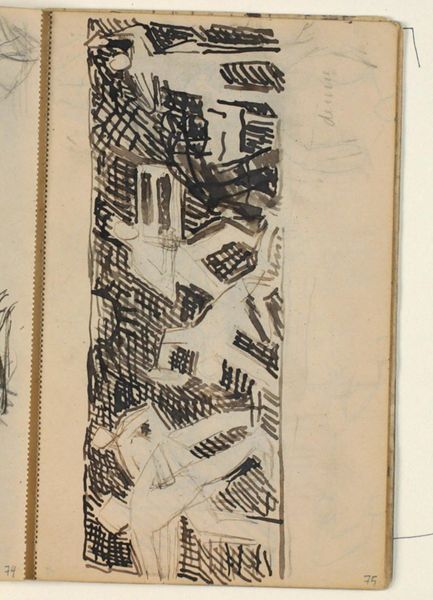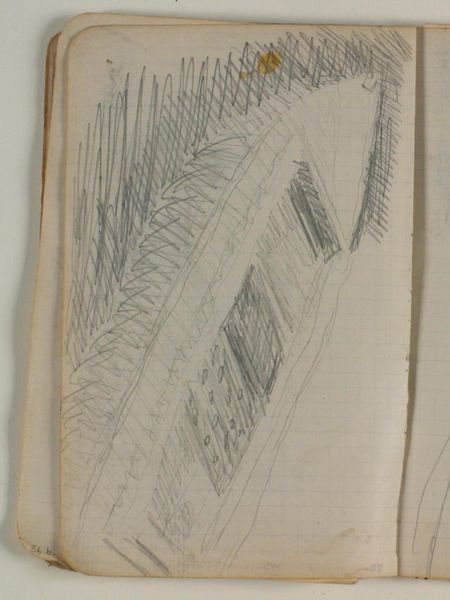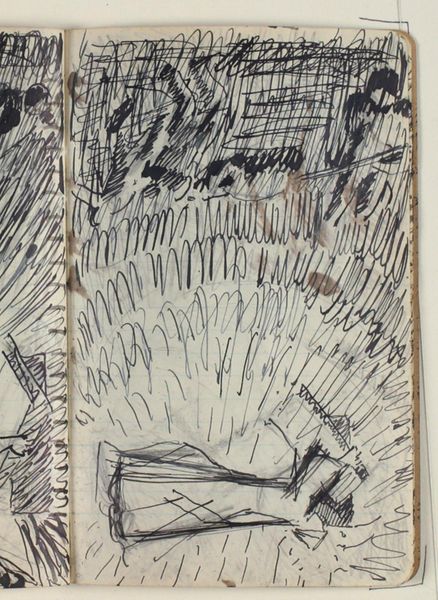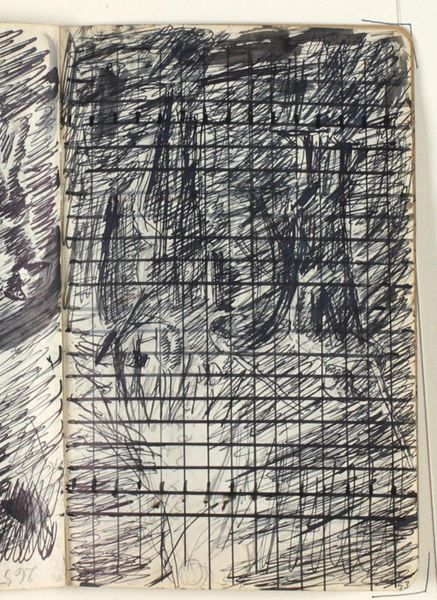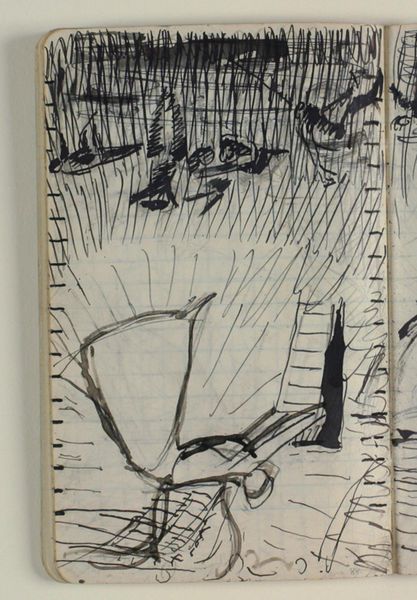
drawing, ink, pen, architecture
#
drawing
#
toned paper
#
pen sketch
#
sketch book
#
hand drawn type
#
personal sketchbook
#
ink
#
sketchwork
#
geometric
#
pen-ink sketch
#
pen work
#
sketchbook drawing
#
pen
#
sketchbook art
#
architecture
Dimensions: 175 mm (height) x 109 mm (width) (monteringsmaal), 175 mm (height) x 109 mm (width) (bladmaal)
Editor: This is "Det himmelske Jerusalem," or "The Heavenly Jerusalem," a pen and ink drawing by Niels Larsen Stevns from 1933-34. The city looks like a complex maze, built on a grid. What stands out to you most when you look at this drawing? Curator: The labyrinthine structure, indeed. It's not just a city plan, but a symbolic representation of the spiritual journey. Mazes and labyrinths, from Crete to Chartres, have represented trials, initiations, and the search for inner truth. Editor: So, the city isn’t literal? It's more about a journey? Curator: Exactly. Consider the title: Heavenly Jerusalem. Jerusalem, for centuries, has signified not merely a geographical location, but the ultimate spiritual destination, a symbol of peace and divine presence in the Abrahamic faiths. Larsen Stevns perhaps uses architecture to visually express that aspirational goal of inner peace and redemption. Editor: It’s interesting that he uses such precise lines and geometric forms to depict something spiritual. Curator: The geometric precision emphasizes order and control. A contrast to the chaos one might expect on such a profound spiritual quest. Perhaps this hints at the necessary discipline, a framework, required to achieve enlightenment or divine understanding. Does this order influence your emotional response? Editor: Yes, it's less about feeling and more about thought, like a puzzle to be solved. The visual symbolism makes me think about the constant human search for meaning. Curator: I find that, in rendering Jerusalem, Stevns uses geometric forms to mirror universal, deeply felt human needs, which architecture satisfies: shelter, hope, meaning. It also hints at what transcends form. A paradox. Editor: I learned to look beyond the architectural drawing toward a personal journey using symbols. Curator: And I am reminded of how a simple sketch can represent something eternal, always accessible through the visual language of cultural memory.
Comments
No comments
Be the first to comment and join the conversation on the ultimate creative platform.
